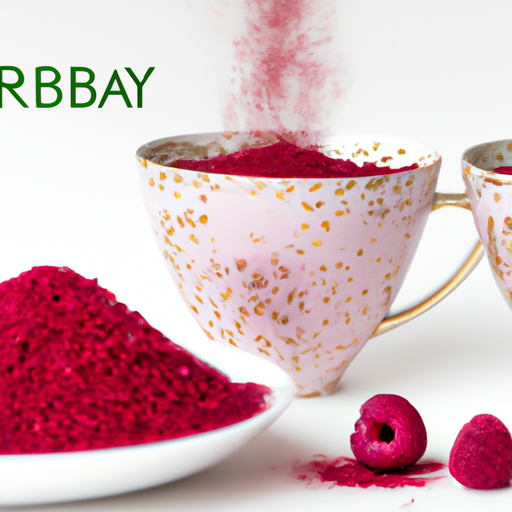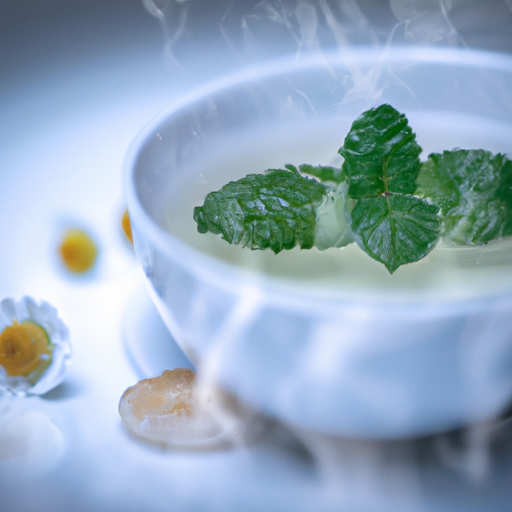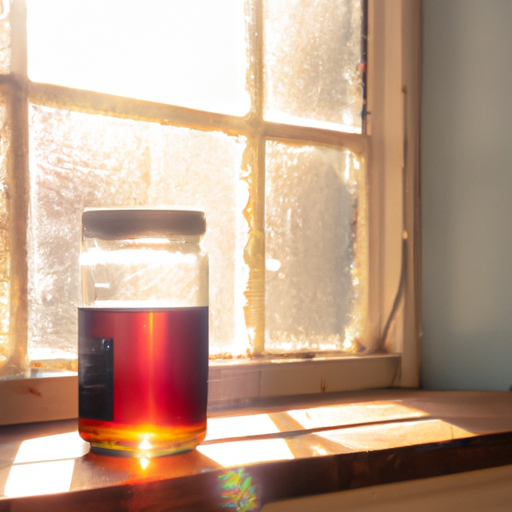Picture a revitalizing oasis for your taste buds, a combination of the finest herbs from nature delicately infused in chilled water. Step into the realm of herbal tea cold infusions, where the flavors of plants come alive on your tongue, invigorating your senses sip by sip.
In this article, I will guide you through the art of crafting your own cold infusion, unlocking a world of flavors, aromas, and health benefits.
With a holistic approach, we will explore the key elements of a successful cold infusion, from selecting the perfect herbs to enhancing the infusion with subtle flavors. We will delve into the various methods and techniques, ensuring you create a brew that is as unique as you are.
Along the way, we will also discuss the importance of water quality, as it plays a vital role in extracting the essence of the herbs.
So, grab your favorite herbs, a pitcher of water, and let’s embark on a journey of herbal tea cold infusions. Prepare to savor the simplicity of nature’s bounty, and discover a refreshing elixir that will invigorate your body and soul.
Key Takeaways
- Cold infusion is a refreshing and flavorful way to enjoy herbal tea.
- Cold infusion retains delicate flavors, reduces release of tannins and caffeine.
- Infuse tea with fresh and ripe fruits and vegetables for added flavor.
- Proper storage helps maintain freshness and potency of the infusion.
Choosing the Right Herbs for Cold Infusions
Looking for the perfect herbs to make a refreshing cold infusion? When it comes to choosing the right herbs for cold infusions, it’s important to consider not only their flavors but also their health benefits.
Start by selecting herbs that are suitable for drying, such as mint, chamomile, and lavender. These herbs retain their flavors and aromas even after drying, making them ideal for cold infusions.
Additionally, each of these herbs offers unique health benefits. Mint, for example, aids digestion and provides a cooling sensation. Chamomile promotes relaxation and helps with sleep. Lavender has a calming effect on the mind and body.
By incorporating these herbs into your cold infusions, you not only create a refreshing beverage but also enhance your overall well-being. So go ahead, experiment with different combinations and enjoy the benefits of these herbal infusions.
Preparing Your Herbs for Cold Infusion
Start by selecting the specific herbs you’d prefer for your chilled concoction, skillfully savoring the scent of each selection.
When it comes to drying techniques, there are a few options to consider. Hanging the herbs upside down in a well-ventilated area allows them to air dry naturally. This method preserves their flavor and aroma. Alternatively, you can use a dehydrator or an oven set at a low temperature to speed up the drying process.
Once your herbs are dry, store them in airtight containers, away from direct sunlight and moisture. This will help maintain their freshness and potency. Remember to label each container with the herb’s name and the date it was dried.
By following these steps, you’ll have perfectly dried herbs ready for your cold infusions.
Selecting the Perfect Water for Your Infusion
To create a refreshing and invigorating blend, it’s crucial to choose the ideal water for your infusion. The water temperature plays a significant role in the optimal infusion of herbal tea. It’s important to use water that isn’t too hot or too cold. The ideal temperature for herbal tea infusions is around 180°F (82°C).
This temperature allows the herbs to release their flavors and beneficial properties without extracting any bitter compounds.
In addition to water temperature, the quality of the water is also essential for a perfect infusion. Using filtered or spring water is recommended to avoid any impurities or chemicals that may alter the taste and quality of the tea. Tap water, especially if it has a strong chlorine taste, can affect the overall flavor of your infusion.
By using high-quality water, you ensure that the true essence of the herbs is captured, resulting in a truly delightful and nourishing herbal tea.
Infusion Methods and Techniques
You might think that creating the perfect infusion is as simple as pouring hot water over your chosen ingredients, but there are actually various methods and techniques that can elevate your tea experience to a whole new level.
One method that’s gained popularity is cold infusion. Cold infusion involves steeping your tea in cold water instead of hot water. This method offers several benefits compared to hot infusion. Cold infusion retains more of the tea’s delicate flavors and aromas, resulting in a smoother and more refreshing taste. It also reduces the release of tannins and caffeine, making it a great option for those who’re sensitive to these compounds.
When it comes to infusing tea with fruits and vegetables, there are a few tips to keep in mind. First, choose fresh and ripe produce for the best flavor. Wash and prepare your ingredients by slicing or mashing them to release their flavors. Then, add them to your tea and let them infuse for a few hours or overnight in the refrigerator. The longer you let it infuse, the stronger the flavors will be.
Experiment with different combinations to find your favorite fruit and vegetable infusions. Cheers to a refreshing and flavorful tea experience!
Adding Flavor and Enhancements to Your Cold Infusion
One way to enhance the flavors of your chilled brew is by incorporating various fruits, herbs, and spices. This can add a burst of vibrant colors and enticing aromas to your refreshing concoction.
Adding fruits and berries to your cold infusion not only adds a natural sweetness but also infuses the tea with their unique flavors. For a citrusy twist, try adding slices of fresh lemon, lime, or orange. If you prefer a sweeter taste, experiment with berries like strawberries, raspberries, or blueberries. These fruits can give your cold infusion a delightful fruity essence.
Additionally, you can explore different sweeteners like honey, agave syrup, or stevia to further enhance the taste. Remember to adjust the quantities to your preference, as some fruits and sweeteners can be overpowering.
Enjoy the process of creating your personalized herbal tea cold infusion with these flavor-enhancing options.
Storing and Serving Your Cold Infusion
When it comes to keeping your refreshing elixir at its best, proper storage is key, ensuring that each sip delivers a burst of rejuvenating flavors.
To maintain the potency and freshness of your cold infusion, there are a few storing techniques to keep in mind. Firstly, store your herbal tea cold infusion in a glass jar with an airtight lid in the refrigerator. This will prevent any oxidation and maintain the flavors for a longer period.
Additionally, avoid storing your infusion near strong-smelling foods as it can absorb their aromas.
When serving your cold infusion, consider adding some ice cubes or fresh herbs for an extra touch of flavor and presentation. For a truly refreshing experience, serve your cold infusion in a chilled glass or a mason jar with a straw.
These simple storage and serving suggestions will help you enjoy your herbal tea cold infusion to the fullest.
Exploring Different Herbal Tea Cold Infusion Recipes
Now that you know how to properly store and serve your cold infusion, let’s dive into the exciting world of exploring different herbal tea cold infusion recipes.
There are endless possibilities when it comes to creating unique and refreshing blends using various herbs and botanicals. Not only do these blends offer a delightful taste, but they also come with a plethora of health benefits.
From soothing chamomile to invigorating peppermint, each herb provides its own unique set of healing properties. For example, chamomile is known for its calming effects, while peppermint can aid digestion.
By experimenting with different combinations, you can customize your cold infusion to target specific health concerns or simply indulge in a delicious and revitalizing beverage.
So, grab your favorite herbs and let’s embark on a journey of aromatic flavors and wellness.
Frequently Asked Questions
Can I use dried herbs for cold infusion or does it have to be fresh herbs?
You can use dried herbs for cold infusion, but using fresh herbs offers more benefits. Fresh herbs have higher levels of essential oils and antioxidants, resulting in a more flavorful and therapeutic tea.
How long can I keep a cold infusion in the refrigerator before it goes bad?
To maximize the shelf life of a cold infusion, it’s important to store it properly. I recommend keeping it in an airtight container in the refrigerator. This will help maintain its freshness and prevent it from going bad.
Can I reuse the herbs for another round of cold infusion?
Yes, you can reuse the herbs for another round of cold infusion. This not only extends the benefits of the herbs but also allows you to extract more flavor and nutrients from them. Reusing herbs in cold infusions is a convenient and sustainable way to enjoy their holistic properties.
What are some common mistakes to avoid when making a cold infusion?
When making a cold infusion, it’s important to avoid some common mistakes. To ensure a successful cold infusion, remember these tips: choose fresh herbs, use filtered water, avoid oversteeping, and store properly.
Are there any herbs that are not suitable for cold infusion and should only be used for hot infusions?
Some herbs are not suitable for cold infusion and are better suited for hot infusions. It’s important to consider the specific properties of each herb and how they are best extracted through either hot or cold methods.
Conclusion
After exploring the world of herbal tea cold infusions, I’m in awe of its wondrous possibilities. Like a symphony of botanical flavors dancing on my taste buds, each infusion is a harmonious blend of nature’s goodness.
With the right herbs, pure water, and a touch of creativity, you can create a masterpiece in your cup. So go forth, my fellow tea enthusiasts, and let your taste buds embark on a journey of holistic healing and refreshing delights.
The world of herbal tea cold infusions awaits your exploration.










